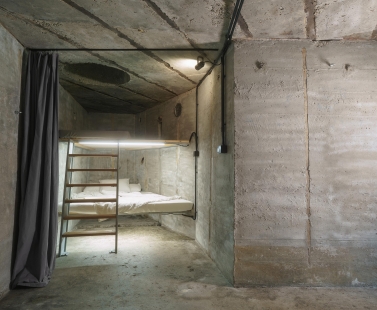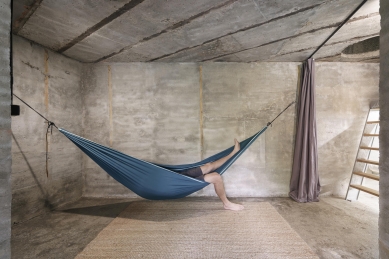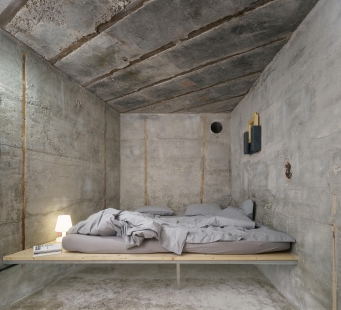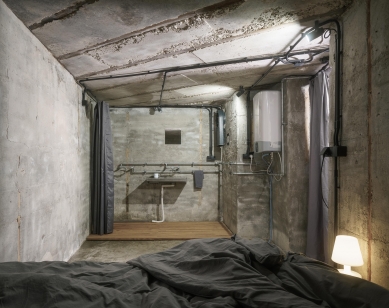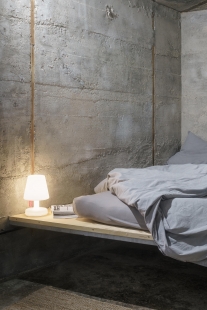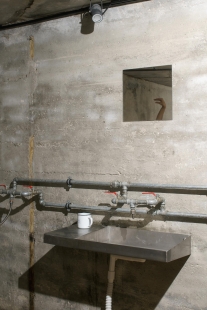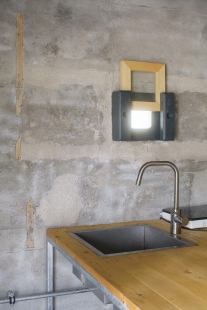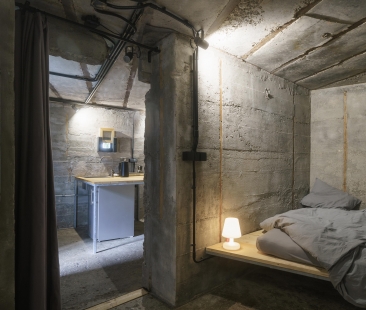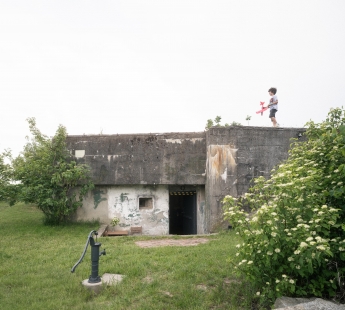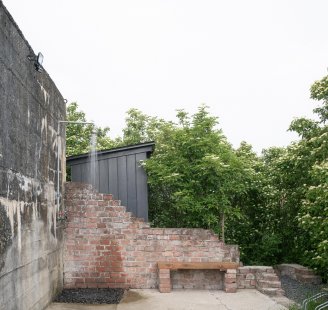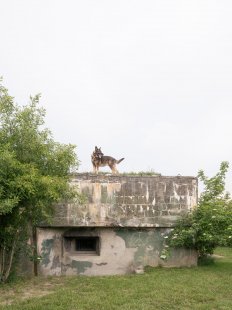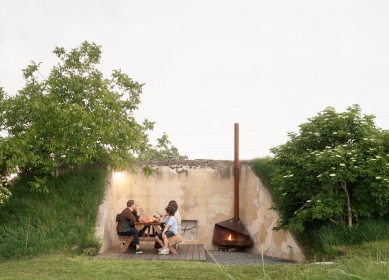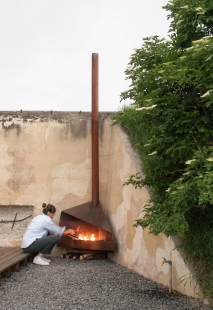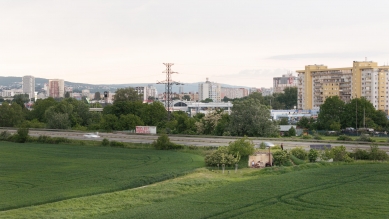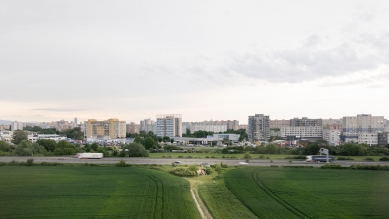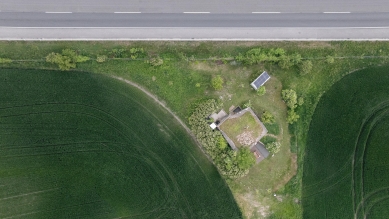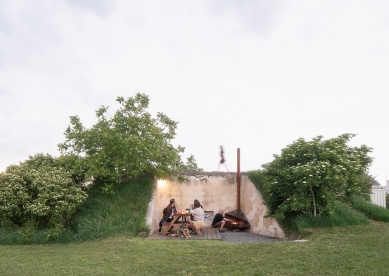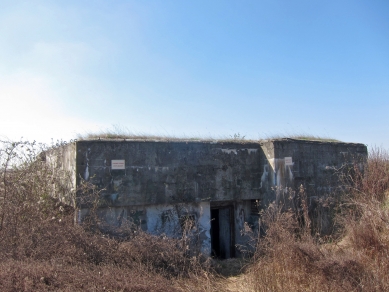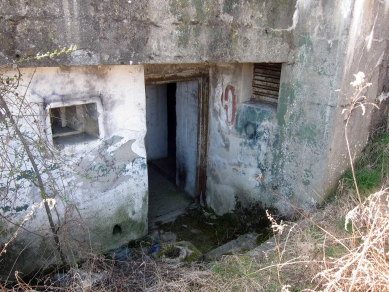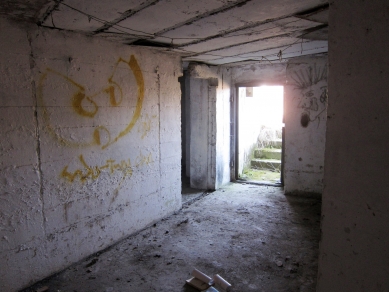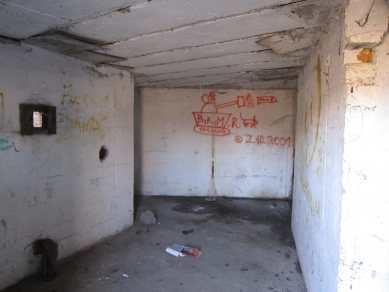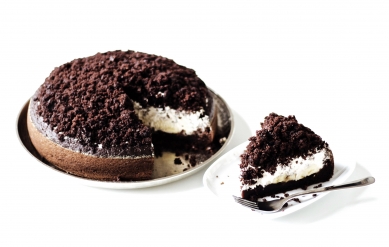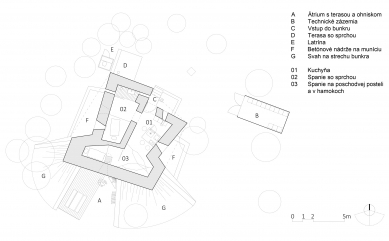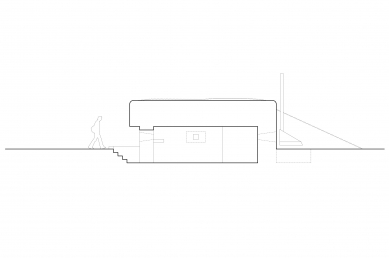
Bunker B-S 10

After the establishment of Czechoslovakia in 1918, the border with Austria and Hungary was considered a potential future battlefield. Bunker B-S 10 "Three Borders" is part of the fortified bridgehead made up of several bunkers, primarily on the Petržalka side of Bratislava. The design, structural solution, and details are the result of direct collaboration with France, which shared its experiences in construction with the Czechoslovak army in building the Maginot Line.
The bunker was constructed between 1934-1935. The massive mass, partially buried in the ground, has a reinforced concrete shell with a thickness of 1.5m. Even during the interwar period, several construction modifications were made. The facility was designed for 10 soldiers, who primarily operated 2 heavy machine guns with a capacity of 100,000 rounds. Part of the defense was also a system for throwing grenades into areas outside the defenders' line of sight. A light machine gun with a rotating bell was never implemented. The opening for the bell was concreted over in the past, leaving space for a periscope. The bunker was later equipped with air conditioning with a pedal mechanism, based on a bicycle, with an air exchange capacity of 800m³/h. The bunker never participated in actual combat. It remained unnoticed until 2017. A solitary inconspicuous structure in the middle of a field, a little off the highway, was seeking a new purpose.
Assignment
The assignment developed gradually. This type of construction is subject to stereotypes. There is often an effort for a museum, and even with a change of purpose, the reference to history is strong. The result is often a path to a tour that itself takes about 10 minutes. Experiential living with an appropriate standard is the essence, the form of response being architecture without an intrusive effort to please or shock at first glance. A hot shower in the bowels of a concrete bunker is a peculiar sensation. The fireplace with a terrace is oriented towards the “enemy”.
Surroundings
The unsurprising approach of cleaning from sediment brought surprises - discoveries that changed the game. The bunker is located 17m from the highway. Normal conversation is only possible at a raised voice. The original direct firing port to the border was concreted and filled in. Historical documentation indicated it, but it was only confirmed by excavation. On the opposite side of the highway, a small atrium with a terrace and fireplace emerged. The new activity on the bunker was great news. The concrete walls of the atrium revealed the original camouflage. The excavated soil was used as a rampart, the boundary between the bunker and the field. We propose protective greenery that discreetly merges with the scrub. The greenery rises, the island in the field comes to life. The outdoor shower and latrine are hidden in the bushes. The roof of the bunker is a small hill with a view of the surrounding area: the Kamzík TV tower at the foot of the Small Carpathians, the unique Petržalka, wind turbines in Upper Austria, and the never-ending stream of cars on the D2.
Bunker
Massive concrete was washed onto the skin. We designed the essential furniture needed for survival. Beds as levels firmly embedded between walls. A galvanized steel base and a solid wood covering anticipate not always ideal conditions and easy repairs. The kitchen island has the same structure as the bed. A steel frame and a wooden work surface, the rest is loose. A few anchors in the walls allow hanging sleeping nets. 6-8 visitors can spend the night here. Blue tanks for water filtration in the kitchen are repeated in steel shelves of the same color. Outdoor concrete troughs for ammunition were used to collect gray water from the shower and kitchen from the interior.
The interior was not meant to be a replica of military purpose or an exceptional intervention by the architect. The project was a dialogue among architects, gradually uncovering the reality of the construction, and Martin Kleibl from the NGO Konduktor, which deals with the cultural values of Petržalka.
The bunker was constructed between 1934-1935. The massive mass, partially buried in the ground, has a reinforced concrete shell with a thickness of 1.5m. Even during the interwar period, several construction modifications were made. The facility was designed for 10 soldiers, who primarily operated 2 heavy machine guns with a capacity of 100,000 rounds. Part of the defense was also a system for throwing grenades into areas outside the defenders' line of sight. A light machine gun with a rotating bell was never implemented. The opening for the bell was concreted over in the past, leaving space for a periscope. The bunker was later equipped with air conditioning with a pedal mechanism, based on a bicycle, with an air exchange capacity of 800m³/h. The bunker never participated in actual combat. It remained unnoticed until 2017. A solitary inconspicuous structure in the middle of a field, a little off the highway, was seeking a new purpose.
Assignment
The assignment developed gradually. This type of construction is subject to stereotypes. There is often an effort for a museum, and even with a change of purpose, the reference to history is strong. The result is often a path to a tour that itself takes about 10 minutes. Experiential living with an appropriate standard is the essence, the form of response being architecture without an intrusive effort to please or shock at first glance. A hot shower in the bowels of a concrete bunker is a peculiar sensation. The fireplace with a terrace is oriented towards the “enemy”.
Surroundings
The unsurprising approach of cleaning from sediment brought surprises - discoveries that changed the game. The bunker is located 17m from the highway. Normal conversation is only possible at a raised voice. The original direct firing port to the border was concreted and filled in. Historical documentation indicated it, but it was only confirmed by excavation. On the opposite side of the highway, a small atrium with a terrace and fireplace emerged. The new activity on the bunker was great news. The concrete walls of the atrium revealed the original camouflage. The excavated soil was used as a rampart, the boundary between the bunker and the field. We propose protective greenery that discreetly merges with the scrub. The greenery rises, the island in the field comes to life. The outdoor shower and latrine are hidden in the bushes. The roof of the bunker is a small hill with a view of the surrounding area: the Kamzík TV tower at the foot of the Small Carpathians, the unique Petržalka, wind turbines in Upper Austria, and the never-ending stream of cars on the D2.
Bunker
Massive concrete was washed onto the skin. We designed the essential furniture needed for survival. Beds as levels firmly embedded between walls. A galvanized steel base and a solid wood covering anticipate not always ideal conditions and easy repairs. The kitchen island has the same structure as the bed. A steel frame and a wooden work surface, the rest is loose. A few anchors in the walls allow hanging sleeping nets. 6-8 visitors can spend the night here. Blue tanks for water filtration in the kitchen are repeated in steel shelves of the same color. Outdoor concrete troughs for ammunition were used to collect gray water from the shower and kitchen from the interior.
The interior was not meant to be a replica of military purpose or an exceptional intervention by the architect. The project was a dialogue among architects, gradually uncovering the reality of the construction, and Martin Kleibl from the NGO Konduktor, which deals with the cultural values of Petržalka.
TOITO architects
The English translation is powered by AI tool. Switch to Czech to view the original text source.
0 comments
add comment


